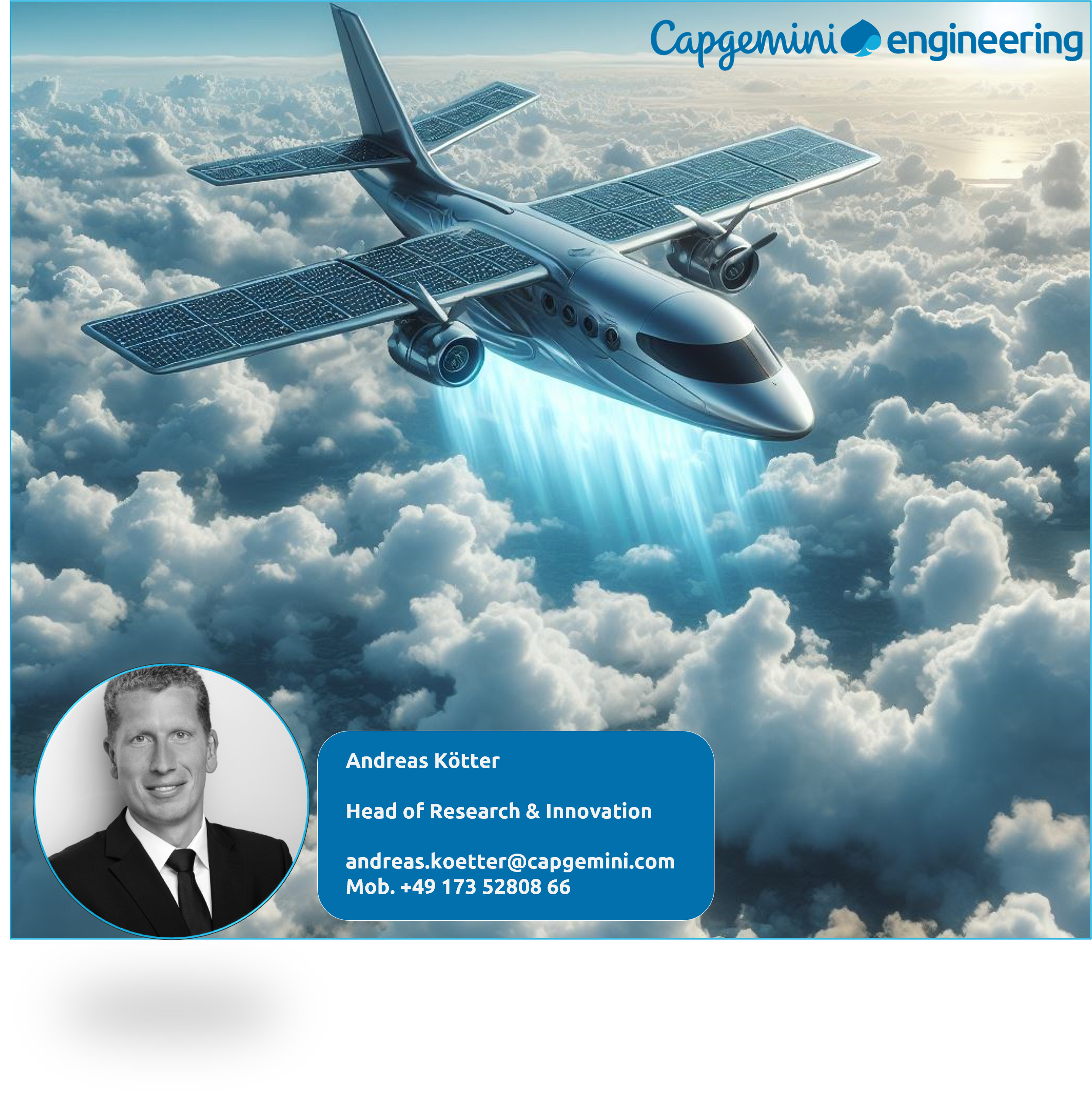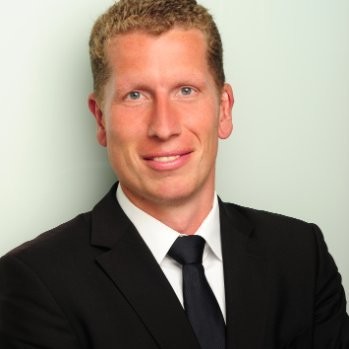Andreas Kötter has been working for Capgemini for 14 years. He has many years of expertise in the areas of prototype and demonstrator development as well as innovation management. With more than 12 years of experience in coordinating various research and innovation projects funded by the European Commission and the German government, he now leads the Capgemini Center of Excellence for Research and Innovation.
Q1: Why is the topic so significant, for whom, and has its significance already been identified?
Well, imagine if we could fly around the world guilt-free, knowing our aircraft were as environmentally friendly as possible. That's the goal! We think this topic is very important and crucial due to environmental, economic, and societal reasons. It´s significant for everyone who ever looks up at the sky and wonders about the impact of aviation on our planet - stakeholders, aircraft manufacturers, airlines, passengers, government and future generations. The significance of sustainable aircraft-development and manufacturing is recognized, but we're still in the "let's-make-this-happen" phase rather than the "sit-back-and-relax" phase.
Here at Capgemini Engineering, we're not just engineering the future; we're engineering a greener, more sustainable one. One of our commitments is that end-to-end sustainable aircraft development and manufacturing isn't just about building planes; it's about shaping a future where our skies are cleaner, our journeys are more efficient, and our planet is happier. The topic of sustainable aircraft isn't just important for the future; it's essential. As we soar into tomorrow, we recognize that sustainability isn't just a buzzword; it's a responsibility, and we're proud to support the change towards a brighter, greener aviation industry.
Q2: Which is the current technological position with regards to end-to-end sustainable aircraft development and manufacturing?
Picture this: Your plane is like a massive puzzle. We've got pieces like lightweight materials, energy-efficient engines, and slick aerodynamics. Right now, we're fitting those puzzle pieces together faster than one can say "in-flight entertainment". But, like any good puzzle, there are still some missing pieces and a few edges that need smoothing out. This means currently technology is advancing to make aircraft development and manufacturing processes more environmentally friendly. This involves using renewable energy sources, strong recyclable materials, and innovative designs to reduce emissions and waste. Think of it as pimping out your ride, but with solar panels instead of spinning rims! We're still figuring out how to put all those pieces together to make planes that are both efficient and eco-friendly.
Q3: What are the inherent challenges when considering the development of sustainable aircraft?
Oh, the challenges -that’s the trick! We've got to figure out how to make planes lighter, quieter, and less polluting without sacrificing safety or breaking the bank. Plus, we need to overhaul the entire manufacturing process to be more sustainable from start to finish. It's like trying to change the tires on a speeding airplane while it's still in the air – very tricky! And let's not forget the financial acrobatics we must perform. Building sustainable aircraft isn't cheap; it's like trying to fund a space mission on a lemonade stand budget - we need investors with pockets deeper than the Mariana Trench. But we are energized and positive on this innovative topic as that’s how we work as pioneers: With a dash of creativity, a sprinkle of innovation, and maybe a pinch of luck, we'll overcome these challenges faster than one can say "Ready for Take-Off”!
Q4: How should the authorities contribute to its success?
They've got a big role to play in this game. They need to lay down the rules and offer incentives to push the industry in the right direction. Whether it's setting emissions standards or investing in research, they've got the power to make or break our sustainable aviation dreams. So, EU, if you're listening, we could use a little more of your power – it’s time for you to step up and be the wind beneath our wings.
Q5: Which is the role of academia in the field of sustainable aircraft manufacturing?
Clearly, Academia serves as a pivotal hub for research, innovation, and education in End-to-End Sustainable Aircraft Development and Manufacturing. They're the ones pushing the boundaries of what's possible with their research and training up the next generation of aerospace superstars. Without them, we would probably still be stuck with paper airplanes. Capgemini Engineering believes in the power of collaboration between industry experts and the bright minds of tomorrow. That's why we are partnering with universities and students to house their energy and innovation, blending it with the deep knowledge and experience of our experts. Together, we're creating a dynamic synergy that propels us towards achieving the best results and shaping a greener future for our next generations.

